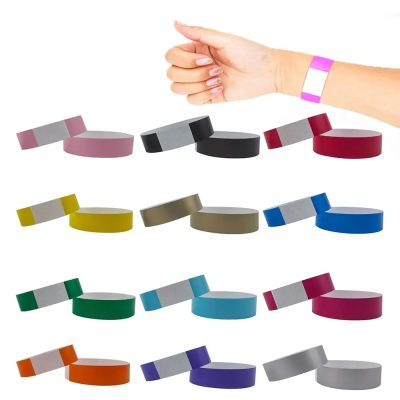Plastic wristbands have long been a staple in the healthcare industry, primarily used for patient identification. However, their functionality has evolved significantly with technological advancements. Here are some innovative uses for plastic wristbands in healthcare, showcasing their versatility and importance.
- Patient Identification One of the primary uses of plastic wristbands in healthcare is patient identification. These wristbands are crucial for ensuring that patients receive the correct treatment and medication. They typically include essential information such as the patient’s name, date of birth, and medical record number, reducing the risk of medical errors.
- Emergency Room Efficiency In busy emergency rooms, plastic wristbands can streamline patient management. Color-coded wristbands can help quickly identify patients based on the severity of their condition, triage status, or specific needs. This visual system allows healthcare providers to prioritize care and improve response times in critical situations.
- Allergy and Medication Alerts Plastic wristbands can be customized to include allergy and medication alerts. These wristbands often use bright colors or specific icons to indicate allergies to medications, foods, or other substances. This ensures that all healthcare providers are aware of potential risks, preventing adverse reactions and improving patient safety.
- Access Control and Security Plastic wristbands can enhance security within healthcare facilities. Wristbands with RFID technology can be used to control access to restricted areas, ensuring that only authorized personnel can enter. This is particularly useful in pediatric wards, neonatal units, and psychiatric facilities where additional security measures are necessary.
- Infant Identification and Protection In maternity wards, plastic wristbands are used for infant identification and protection. Both the mother and newborn are given matching wristbands immediately after birth. This practice helps prevent mix-ups and ensures that infants are returned to the correct parents after procedures or when moving between departments.
- Streamlining Hospital Admissions During hospital admissions, plastic wristbands can facilitate the check-in process. Patients receive wristbands with pre-printed barcodes linked to their medical records. These barcodes can be scanned for quick access to patient information, reducing paperwork and administrative errors.
- Monitoring Patient Movement RFID-enabled plastic wristbands can track patient movement within the hospital. This technology helps monitor patients who may be at risk of wandering, such as those with dementia or psychiatric conditions. Alerts can be sent to staff if a patient enters an unauthorized area, enhancing overall patient safety.
- Managing Outpatient Services Plastic wristbands are also useful in managing outpatient services. Patients can be given wristbands during their visit, allowing staff to quickly identify them and access their records. This is particularly beneficial in busy clinics and laboratories, where efficient patient flow is essential.
- Promoting Hygiene and Infection Control Some healthcare facilities use disposable plastic wristbands to promote hygiene and infection control. By issuing new wristbands at regular intervals, the risk of contamination from worn or damaged wristbands is minimized. This practice supports overall infection prevention efforts within the facility.
- Enhancing Patient Experience Customizable plastic wristbands can enhance the patient experience by providing a personal touch. For example, wristbands can be designed with comforting colors or messages, particularly for pediatric patients. This small gesture can make a significant difference in how patients feel during their stay.
- Supporting Clinical Trials In clinical trials, plastic wristbands help manage and monitor participants. Wristbands can include unique identifiers, linking participants to specific trial data. This ensures accurate tracking of treatments, adherence to protocols, and efficient data collection, contributing to the success of the trial.
Plastic wristbands have proven to be an invaluable tool in healthcare, offering a range of innovative applications beyond traditional patient identification. From improving emergency room efficiency and enhancing security to promoting hygiene and supporting clinical trials, these wristbands play a critical role in modern healthcare settings. As technology continues to advance, we can expect even more innovative uses for plastic wristbands, further enhancing patient care and operational efficiency in healthcare facilities.










